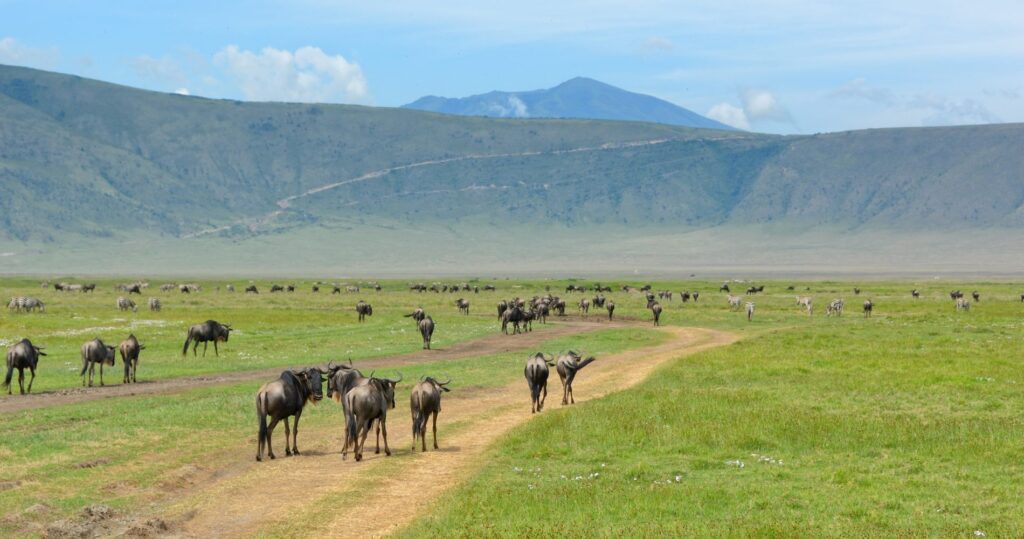Ngorongoro Crater
- Home
- Ngorongoro Crater
Ngorongoro Crater
The Ngorongoro Crater, located in Tanzania, is a natural wonder and a UNESCO World Heritage Site. It is the world’s largest inactive, intact volcanic caldera, formed over two million years ago when a massive volcano exploded and collapsed. The resulting crater spans over 260 square kilometers and reaches depths of around 600 meters, creating a unique and self-contained ecosystem.
Inside the crater, a diverse range of habitats exists, including grasslands, forests, and a soda lake. This diversity sustains a rich concentration of wildlife, making Ngorongoro Crater a haven for some of Africa’s most iconic species. Visitors can witness the “Big Five” – lions, elephants, buffalo, leopards, and rhinoceros – along with a myriad of other animals such as zebras, wildebeests, and hippos.

The conservation efforts in Ngorongoro are notable, as the Maasai people coexist with the wildlife in the area. The cultural significance of the crater is reflected in the presence of Maasai villages on its rim, adding a unique human dimension to the natural spectacle. The Maasai, known for their vibrant culture and colorful attire, contribute to the distinctive charm of the region.
Tourists can explore the crater’s wonders through guided safaris, enjoying panoramic views from the crater rim before descending into its heart. The steep crater walls create a natural enclosure, providing an intimate and immersive wildlife experience. Ngorongoro Crater’s extraordinary geological and ecological features, combined with its cultural significance, make it a must-visit destination for nature enthusiasts and those seeking an authentic African safari experience.
